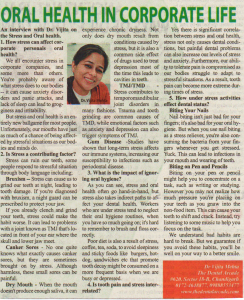Hypodontia is the condition at which the patient has missing teeth as a result of the failure of those teeth to develop (also called tooth agenesis). Hypodontia describes a situation where the patient is missing up to five permanent teeth, excluding the3rd molars. In primary dentition the maxilla is more affected, with the conditi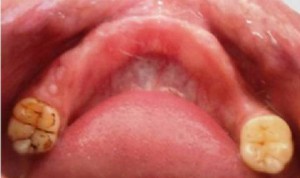 on usually involving the maxillary lateral incisor. The cause of isolated missing teeth remains unclear, but the condition is believed to be associated with genetic or environmental factors during dental development. Hypodontia is often familial, and can also be associated with genetic disorders.
on usually involving the maxillary lateral incisor. The cause of isolated missing teeth remains unclear, but the condition is believed to be associated with genetic or environmental factors during dental development. Hypodontia is often familial, and can also be associated with genetic disorders.
GUMMY SMILE
Gummy Smile is the excessive gingival display when we smile. Under this condition, when we smile, gum tissue overshadows the upper teeth and it looks as if we have small upper teeth with larger than normal gums. If it feels a little awkward, it is because it truly is. If you have a gummy smile, you don’t need to worry as there are various ways in which this condition can be set right.
What Causes A Gummy Smile?
Before delving into how to solve the condition of a gummy smile, let us first understand what causes this condition. Its causes can be:
- Abnormal growth of teeth • Hyperactive functioning of the muscle which controls the various movements of the upper lip • Protrusion of upper jaw.
Is It More Than an Aesthetic
Factors like the position of facial muscles; the growth of gum tissues; size of the lips, mouth, and teeth and their shapes; usually affect the smile. An ideal smile is one, which shows as little gums as possible when we smile. When this is not the case and excessive gum is visible, one can feel awkward and not smile much.Sometimes, the gummy smile is just awkward and sometimes it becomes more than that. It may be an indicator of underlying dental problems that require your attention.
TEETH-WHITENING
Tooth whitening lightens teeth and helps to remove stains and discoloration. Whitening is among the most popular cosmetic dental procedures because it can greatly improve how your teeth look. There are two main types of whitening procedures. Non-vital whitening is done on a tooth that has had root-canal treatment and no longer has a live nerve. Vital whitening is performed on teeth that have live nerves.
Some whitening agents are activated by a laser light, special lights or by the heat from these lights. After the whitening agent is applied, the dentist will shine the light on your teeth. If your teeth are badly discolored, your dentist may suggest that you continue the bleaching process at home for a few days or weeks.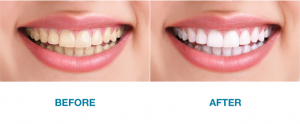
Smoke and your oral health
How Does Smoking Damage Your Teeth and Gums?
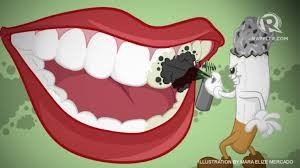
The hundreds of cytotoxic chemicals that are released during smoking affect both the functionality and immunity of the body. The mouth is one of the organs that gets negatively impacted by prolonged smoking . Some of the effects of smoking on your teeth and gums are:
- Gum diseases
- Bad breath
- Oral cancer
- Tooth and denture stains
- Abrasion of the teeth
- Hairy tongue
- Delayed wound healing
How to Brush
What Is the Right Way to Brush?
Proper brushing takes at least two minutes — that’s right, 120 seconds! Most adults do not come close to brushing that long. To get a feel for the time involved, try using a stopwatch. To properly brush your teeth, use short, gentle strokes, paying extra attention to the gumline, hard-to-reach back teeth and areas around fillings, crowns or other restoration. Concentrate on thoroughly cleaning each section as follows:
- Clean the outer surfaces of your upper teeth, then your lower teeth
- Clean the inner surfaces of your upper teeth, then your lower teeth
- Clean the chewing surfaces
- For fresher breath, be sure to brush your tongue, too
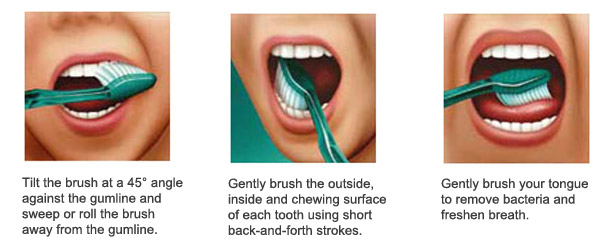
Good Morning everyone, An Interview With DR. VIJITA MEHTA on the Stress and Oral Health
Easy Ways to Prevent Bad Breath.
Please remember, preventing bad breath is always easier than treating it. By developing the right habits, you can be effective at preventing bad breath
- Use mouthwash – Some mouthwashes or oral rinses are effective at preventing bad breath. However, you should never use alcohol based mouthwashes because the alcohol makes the mouth very dry, which will actually cause bad breath.
- Drink green and black teas – They contain polyphenols that help eliminate sulfur compounds and reduce oral bacteria.
- Stop smoking – Studies have shown that smokers present a higher risk of developing periodontal disease and bad breath because smoking causes dry mouth which can cause bad breath.
- Breathe through your nose instead of your mouth – Try to address any snoring or sleep apnea issues that could be affecting your breath and causing dry mouth.
- Clean your dentures at least once a day – Practice the same proper oral care that you would with your original teeth.
TONGUE THRUSTING
Tongue thrusting is a common human behavioural pattern in which the tongue protrudes through the upper and lower front teeth during swallowing, speech, and while the tongue is at rest. Nearly all infants exhibit a swallowing pattern involving tongue protrusion, but by six months of age 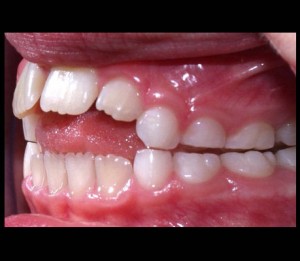 most lose this.Factors that can contribute to tongue thrusting include enlarged tongue, thumb sucking or large tonsils. The force of the tongue against the teeth results in space between the upper and lower front and is an important factor in contributing to a bad bite. The patient may be placed on an appliance similar to a night-guard in the mouth at night, or may wear a more permanent device that can be removed and adjusted by a dentist.
most lose this.Factors that can contribute to tongue thrusting include enlarged tongue, thumb sucking or large tonsils. The force of the tongue against the teeth results in space between the upper and lower front and is an important factor in contributing to a bad bite. The patient may be placed on an appliance similar to a night-guard in the mouth at night, or may wear a more permanent device that can be removed and adjusted by a dentist.
MOUTH BREATHING
Mouth breathing, as the name suggests, is breathing through the mouth rather than the nose. In majority of the cases, mouth breathing represents an involuntary adaptation to an obstructed nasal airway, and mouth breathing is a requirement simply in order to get enough air. This can be due to an obstruction in the n ose or even adenoids. Chronic mouth breathing in children may result in damaging effects to dental and facial growth. It may cause gingivitis of the front teeth, bad breath and even movement of the front teeth. Treatment generally involves removal of the obstruction or a habit breaking appliance fabricated by the dentist.
ose or even adenoids. Chronic mouth breathing in children may result in damaging effects to dental and facial growth. It may cause gingivitis of the front teeth, bad breath and even movement of the front teeth. Treatment generally involves removal of the obstruction or a habit breaking appliance fabricated by the dentist.
COMPONEERS
Componeers are a completely new class of veneers. Until recently, a smile makeover always consisted of porcelain veneers or crowns that are not always in the budget. Plus, these porcelain restorations, while beautiful, are very hard to repair. Now there is a “medium” option- Componeers.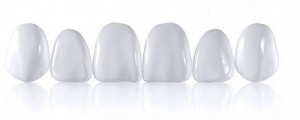 These composite resin veneers are strong, beautiful and much more cost effective than porcelain veneers. Componeers have the beauty of porcelain, the longevity and most importantly, are adjustable, repairable and customizable! So, if you want to “style your smile” but don’t want to break the bank, ask us about the new Componeers system.
These composite resin veneers are strong, beautiful and much more cost effective than porcelain veneers. Componeers have the beauty of porcelain, the longevity and most importantly, are adjustable, repairable and customizable! So, if you want to “style your smile” but don’t want to break the bank, ask us about the new Componeers system.

